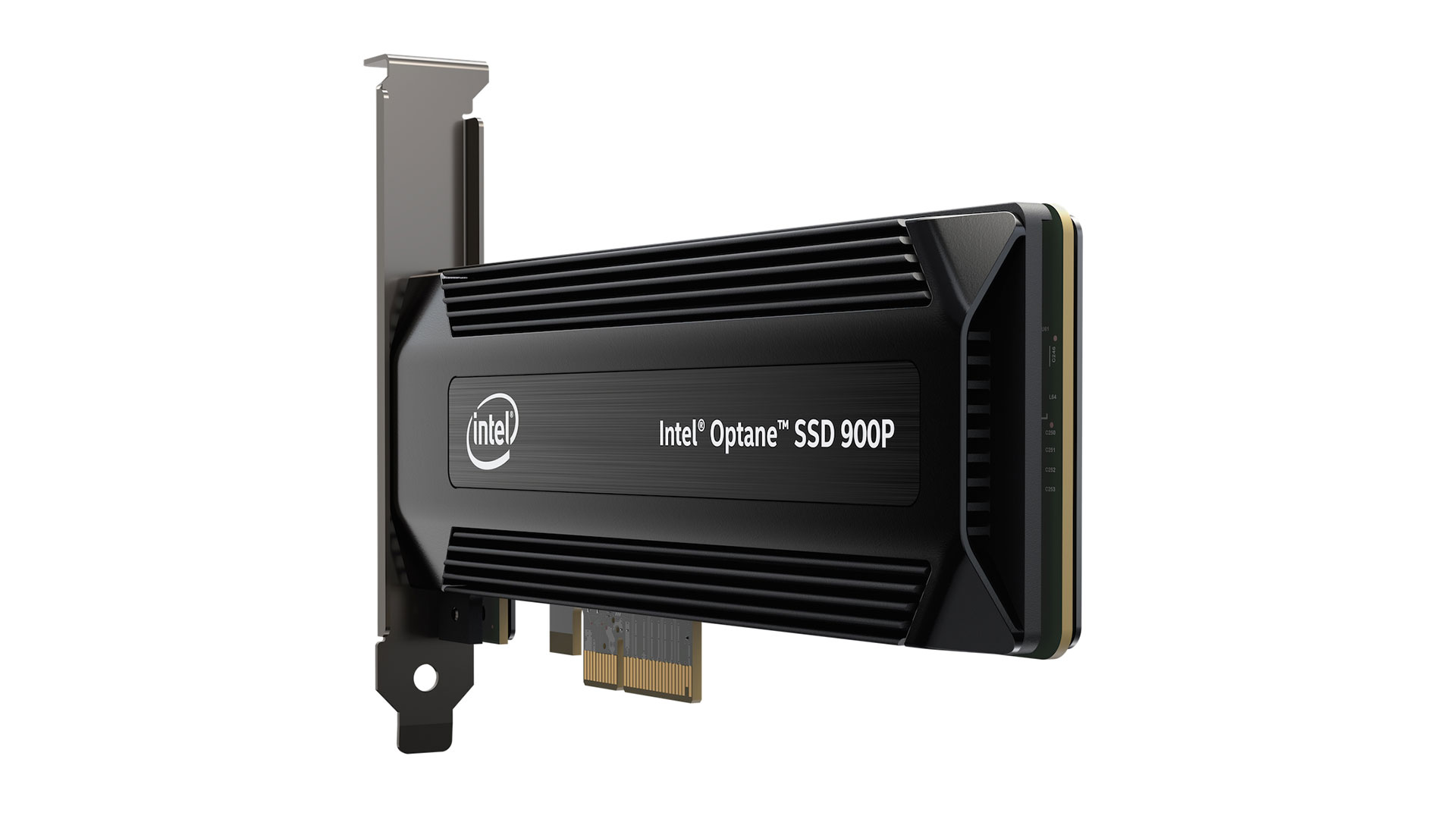Star Citizen Sabre Raven exclusively available with Intel's new Optane 900P SSDs
The fastest SSD in the world is also useful for games. Maybe.

Today, Intel launched the first consumer variant of its 3D XPoint Technology SSDS, the Optane SSD 900P family of drives. I'm still working on the review, but—spoiler alert!—it's damn fast. In fact, it's the fastest SSD I've ever tested in many scenarios, with incredibly low latencies and high throughput. It doesn't win every benchmark I threw at it, but where it leads it does so convincingly.
Here's the dirty not-so-secret of SSDs: they don't make games and the like run much faster. If you want to improve framerates, the best way to do that is with a new graphics card. Which isn't to say they won't help with load times, and games that dynamically load areas are less likely to stutter. But in general, SSDs are a luxury for gamers rather something that's absolutely required. I don't feel the same about SSDs with Windows boot drives, where you absolutely need an SSD in any modern system—it's arguably the biggest upgrade you can make to an aging PC—but if you were to ask me if a premium SSD is something gamers need? The answer would be no.
Except, fans of Star Citizen might want to reconsider, because if you're eager to get your hands on an exclusive ship, the Sabre Raven, Intel has partnered with Robert Space Industries and included a code for the ship with each Optane SSD 900P series drive—"while supplies last," which could be days, weeks, or months. The code also counts as a Star Citizen package, giving you access to the current build of the game as well as future updates, which is at minimum a $45 value.

RSI is letting people give the Sabre Raven a test drive at CitizenCon, which is going on right now in Frankfurt, Germany. As to why RSI would want to team up with Intel, it looks like Chris Roberts was super impressed with its performance and many of the Star Citizen developers are using the drive. Says Roberts, "The Intel Optane SSD 900P Series is amazingly fast, easily the fastest drive I have ever used. Our Star Engine developers have been working on technology to improve loading times using new techniques developed for Star Citizen and optimized for the Intel Optane SSD 900P Series, which is the fastest SSD we've tested. We continue to enhance Star Citizen so the performance benefits with Intel Optane drives will continue to grow, alongside Star Citizen, into the future."
For game developers, and software developers in general, the extremely low latencies offered by Optane 900P SSDs should deliver noticeable improvements in productivity. Build times should decrease, loading and testing changes to the engine or a level will happen more quickly, and the high price of entry isn't as likely to be a long-term deterrent. But for regular gamers, it's still a tough sell, unless you're talking with extreme gamers that are already putting thousands of dollars into Star Citizen ships.
As for the Sabre Raven, RSI said that the exclusive codes with Optane drives include a lifetime insurance policy, so if in the future your Sabre Raven gets hijacked and stolen, you won't need to worry. How much the ship and insurance are worth is hard to estimate, but it will work as a free entry point into the Star Citizen universe—or at least it will once version 3.0 is publicly rolled out. This is only the Star Citizen part of the game, but we were informed that buyers of the Optane 900P drives can also add Squadron 42 for $15 (normally $45).

So, how much does the Optane 900P series cost? That might be the sticking point. The 280GB PCIe card version will set you back $389 (there's also a 280GB U.2 variant for the same price), while the 480GB PCIe card costs $599. That's over twice as expensive as the Samsung 960 Pro 512GB, which is the second fastest consumer SSD we've tested. But it doesn't come with Star Citizen.
Keep up to date with the most important stories and the best deals, as picked by the PC Gamer team.
I'll have the full review up later today, with benchmarks showing where the Optane 900P demolishes the competition. If you're interested in fast storage, 3D XPoint is the next big advancement.
Jarred's love of computers dates back to the dark ages when his dad brought home a DOS 2.3 PC and he left his C-64 behind. He eventually built his first custom PC in 1990 with a 286 12MHz, only to discover it was already woefully outdated when Wing Commander was released a few months later. He holds a BS in Computer Science from Brigham Young University and has been working as a tech journalist since 2004, writing for AnandTech, Maximum PC, and PC Gamer. From the first S3 Virge '3D decelerators' to today's GPUs, Jarred keeps up with all the latest graphics trends and is the one to ask about game performance.


